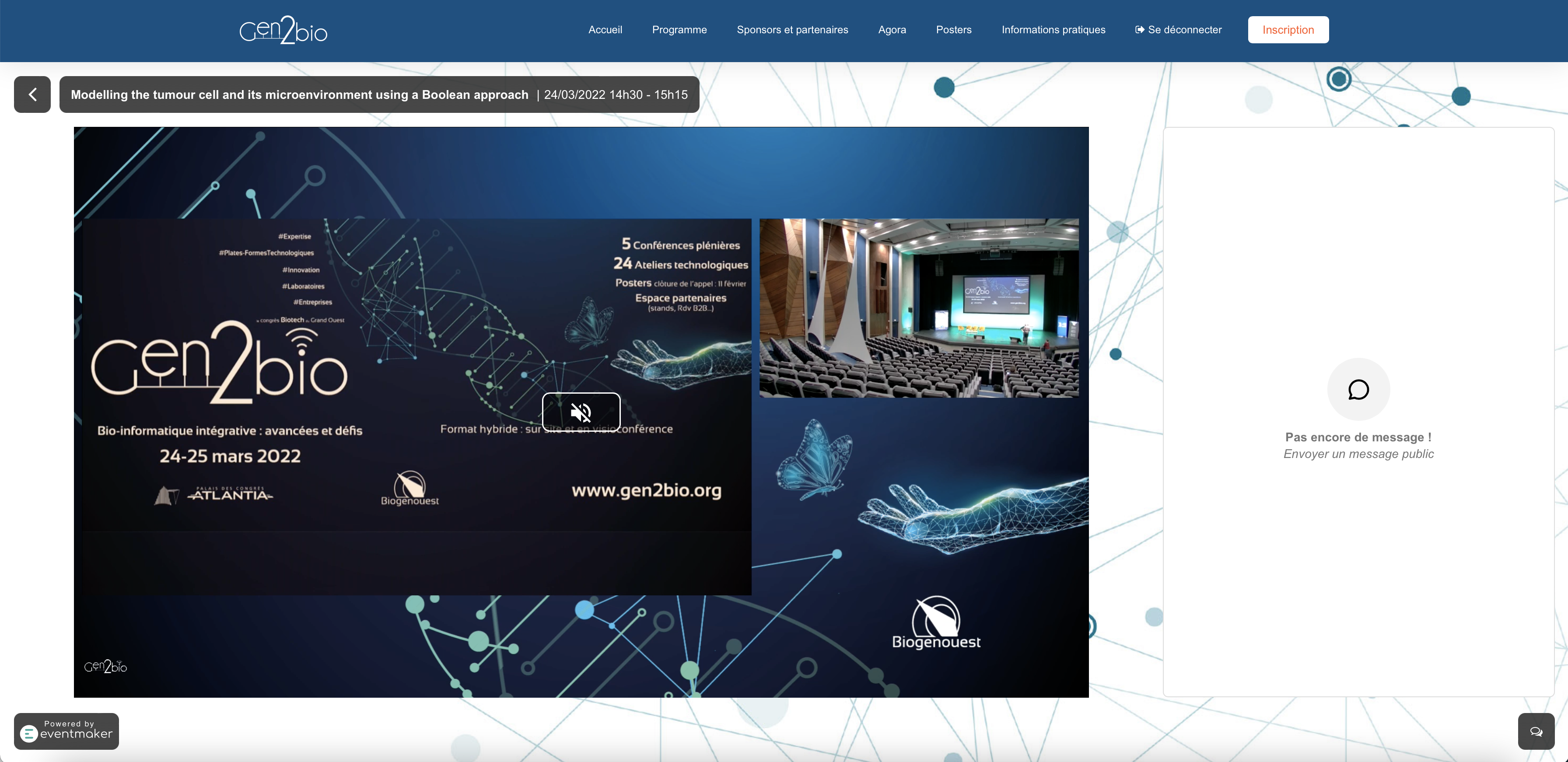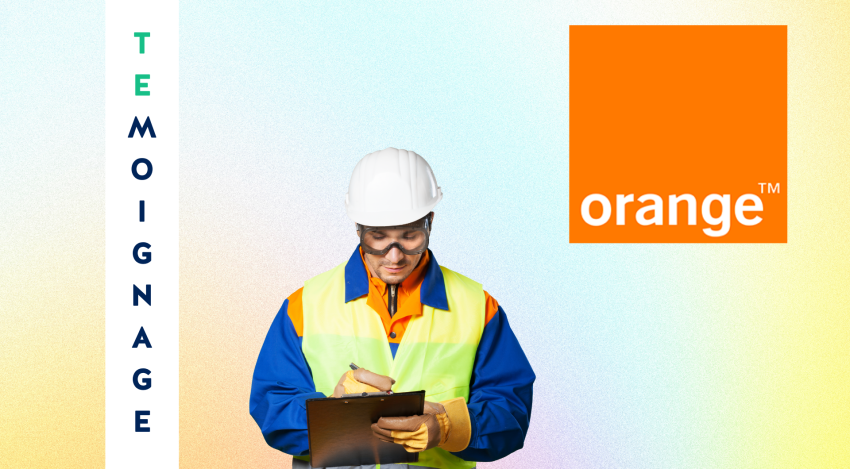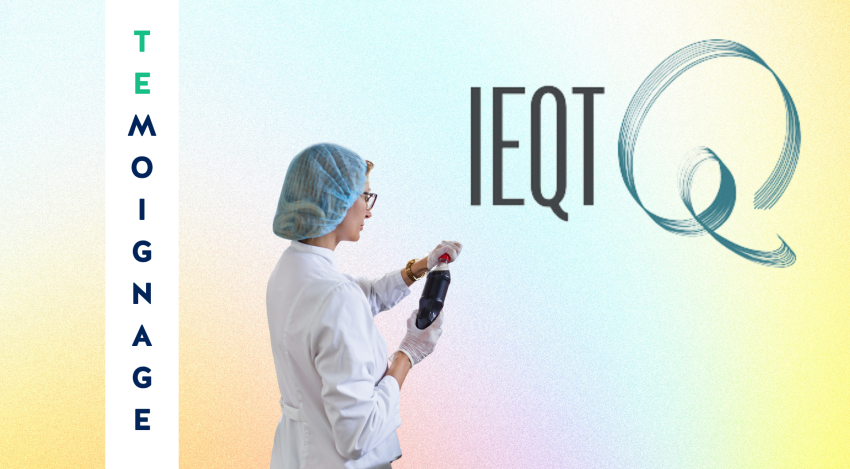

Streaming a hybrid event or conference with live content is no small feat. A live broadcast requires preparation, equipment, and resources. It's not something everyone can do, and it's not something that can be improvised. Often, external providers are enlisted, with a team of technical directors and all the necessary audiovisual equipment. A turnkey solution, which does, however, demand a significant budget for a quality result that is often underutilized.
There are other, more cost-effective, ways to handle the streaming yourself. In this article, you'll find advice for filming and live streaming an event, conference, or congress, along with a concrete example and testimony from Mr. Sorroche, the communication manager of the Biogenouest network.
A few months ago, Biogenouest organized a scientific congress that takes place in-person every year in the Grand-Ouest region. However, the pandemic disrupted the event, leading to an online edition in 2020 and a cancellation last year. In March of this year, a new edition was organized. To guard against any potential Covid-19-related disruptions, the event was live-streamed. A fine example of a hybrid event, which Manuel Sorroche, the manager, communication at Biogenouest, shares with us.
Of course, with live broadcasting, the risks are higher, so preparation, research, and testing are essential. This article is written to guide you through the process of creating a hybrid event with live streaming.
The 2020 edition of the congress was postponed twice and eventually held online. Like most things done remotely at the start of the pandemic, it wasn't ideal due to limited resources, equipment, anticipation, and practice. Mr. Sorroche received numerous comments and decided to prepare for all possible Covid-19-related restrictions for the 2022 edition.
An event of this magnitude starts being planned about a year in advance. Nonetheless, Biogenouest had no visibility into how the crisis would evolve. Therefore, plans were made to transition fully to remote if needed. Additionally, a hybrid mode was prepared in case attendance restrictions, for instance, were implemented.
Recording the entire congress can also help extend its reach. Someone unable to attend in person could follow the two-day event online. However, this wasn't ideal for Manuel, who reported a lack of interaction with the remote audience. A congress aims to bring together research stakeholders, create synergies, and potentially foster future collaborations. Online, researchers were less inclined to interact and collaborate.
Therefore, live streaming wasn't necessarily essential in his case. On the other hand, offering replays of the conferences and workshops helps preserve the information and increases the audience in the long term!
The University of Rennes 1 has several Kast Revolt Mobile camera kits. These cameras can film both the speaker and their PowerPoint presentation. They feature an integrated control room, meaning they record a video that synchronizes two simultaneous video streams and mixes them directly. Thus, no need for video editing skills or equipment like a black magic; the camera does it all.
This solution was perfect for Mr. Sorroche, who wanted to film conferences and workshops. When he discovered the camera lent to him by the University of Rennes 1, he realized it was also possible to do live streaming directly from the camera's interface.
The congress was live-streamed from four rooms equipped with Kast Revolt cameras, preconfigured and managed from a tablet. Using this solution also meant the video could be recorded locally.
Manuel Sorroche also engaged Eventmaker for the digital organization of the event. Eventmaker is a platform that offers tools for event management.
The congress had its own dedicated website for the online edition. The platform handled registrations (both online and in-person), participant payments, and the selection of conferences and activities they wished to attend. However, Eventmaker doesn't handle the capture aspect, which was managed by Kast cameras, as explained earlier.

On the event day, remote participants simply went to the platform and selected what they wanted to watch. The video player also featured a chat function for interaction. Nevertheless, remote interactions were very limited. The chat was moderated by a moderator in each room, but very few questions were asked!
Biogenouest publishes its replay videos on the Vimeo platform. The congress and workshops were continuously filmed over two days. However, posting replays still required significant effort from Mr. Sorroche to cut the videos and publish the content one by one!
An event of this magnitude required about a year of preparation. To start, a venue needed to be found that could accommodate both in-person attendees and manage live streaming. Transmitting four live video streams requires a significant amount of bandwidth that should not be underestimated!
All speakers were consulted and had to collaborate to ensure everything went smoothly on the event day. Kalyzée assisted Manuel with the technical aspects, the possibilities of Kast cameras, and compatibility with Eventmaker's streaming platform. Eventmaker had to ensure the live stream went smoothly. For this purpose, a technical team was available online throughout the event duration. The technical team at the Palais des congrès de La Baule (the event venue) was also tested on their network capability!
Advice from Mr. Sorroche:
All cameras were configured with personalized overlays and predefined scenes, eliminating the need for real-time manipulation. Nevertheless, it was possible to switch camera views or scenes live.
The Eventmaker platform provided responsive online technical support, a crucial element for a live event. However, no technical glitches were encountered, only a few human-related issues like connectivity problems, which were swiftly resolved!
Five people were present on-site to ensure the smooth running of the live event. One person per room, primarily to manage interactions and monitor the quality of the stream in real-time!
Manuel's Tips for a Successful Stream:
And there you have it! We hope this article can help and inspire you for your future hybrid events!
Feel free to contact us or leave a comment if you have additional tips for capturing and live streaming.


